Trees and drought in urban areas: case studies of New York, London, Paris and Lyon
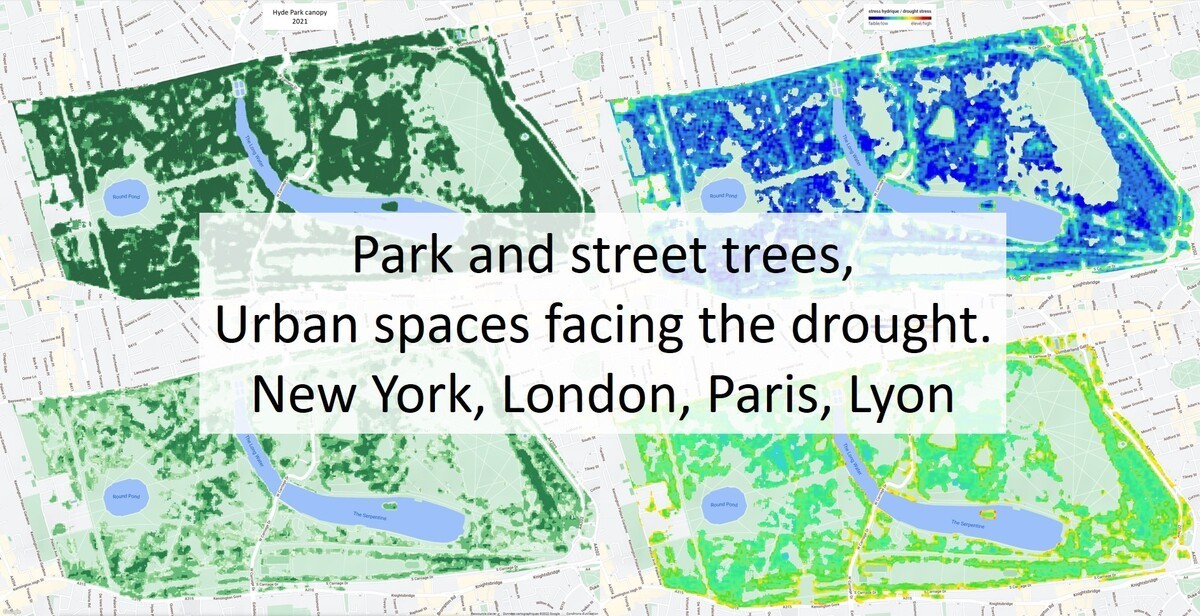
This summer has not only been marked by heat waves and drought, but also fires which have destroyed vast areas of vegetation and a very large number of trees. Although these effects differ in an urban environment, they remain very impactful on the vegetation. This small study, carried out in 4 urban areas (New York, London, Paris and Lyon) shows the impact of phenomena on trees in the city and highlights the differences in behavior of trees located in parks and in the streets of our cities.
Plant structures, in particular trees, bring many benefits to their environment, including a real refreshment of urban spaces. It is critical however, given these surroundings, that these trees are not distressed due to lack of water or subjected to temperatures to which they are not adapted. In recent months, the stresses have accumulated with record temperatures and very low rainfall. How do we quantify this stress? Which sites are the most impacted? What are the most resistant species? What are the lessons we can learn in terms of landscaping and plant programming?
We sought to deal with different urban sites, by size, longitude and latitude and by climate. We are thus interested in four dense urban spaces: New York, London, Paris and Lyon. For each of these sites, we compared two contrasting years, 2021 and 2022 to determine:
- the effect on the tree patrimony
- the effect on two urban parks located in London and Lyon
The study began with a sensitivity analysis of the tree patrimony of these towns. They are generally available in open data and provide access to the location of trees, their age, their species, etc., thus providing a very rich study base.
The first step consisted in evaluating the level of drought stress of each tree and comparing the changes. The following figures present the 2021/2022 comparisons in July for each site:
- Washington Square Park neighborhood in Manhattan:
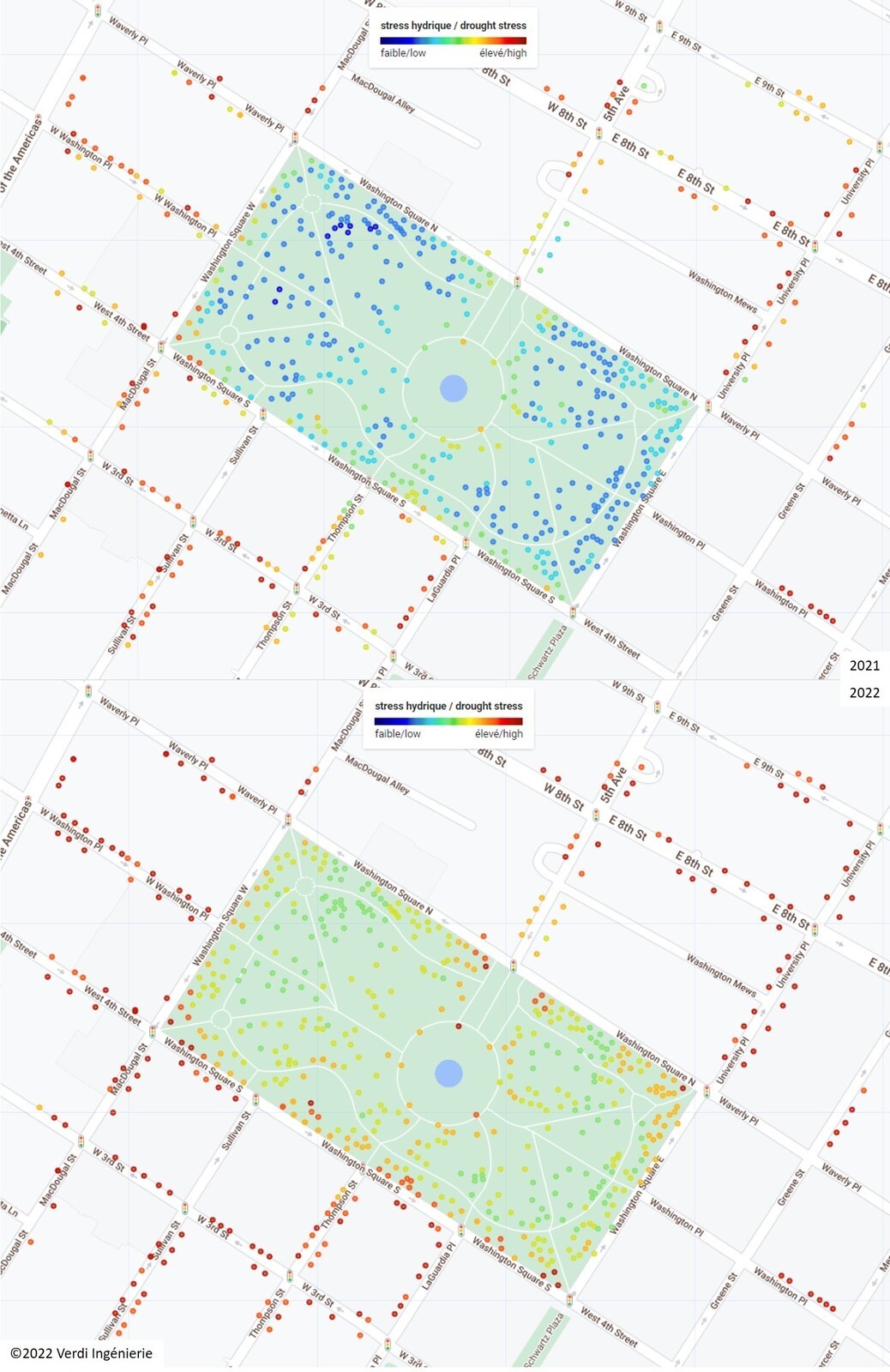
- Westminster district in London :
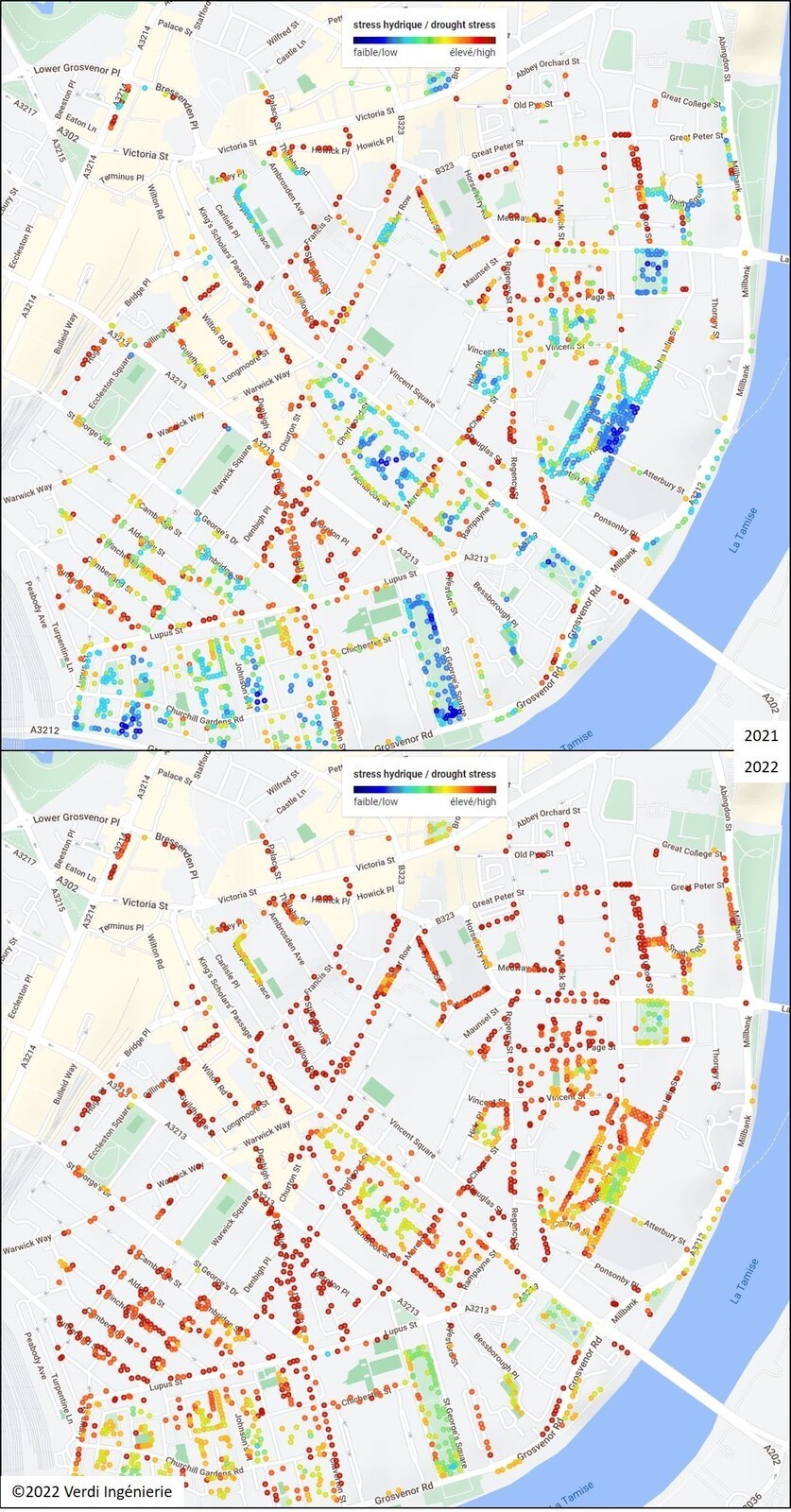
- The 20th district of Paris and the Père Lachaise cemetery :
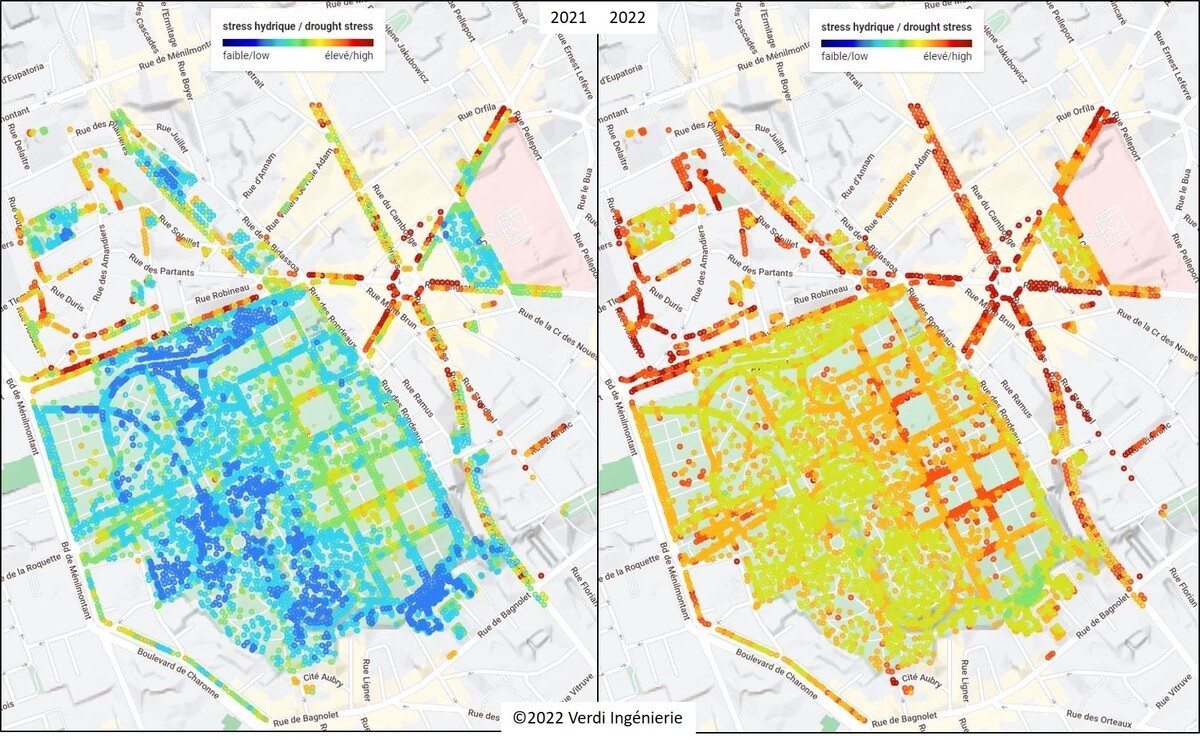
- The neighborhood around Place du Maréchal Lyautey, in the 6th district of Lyon :
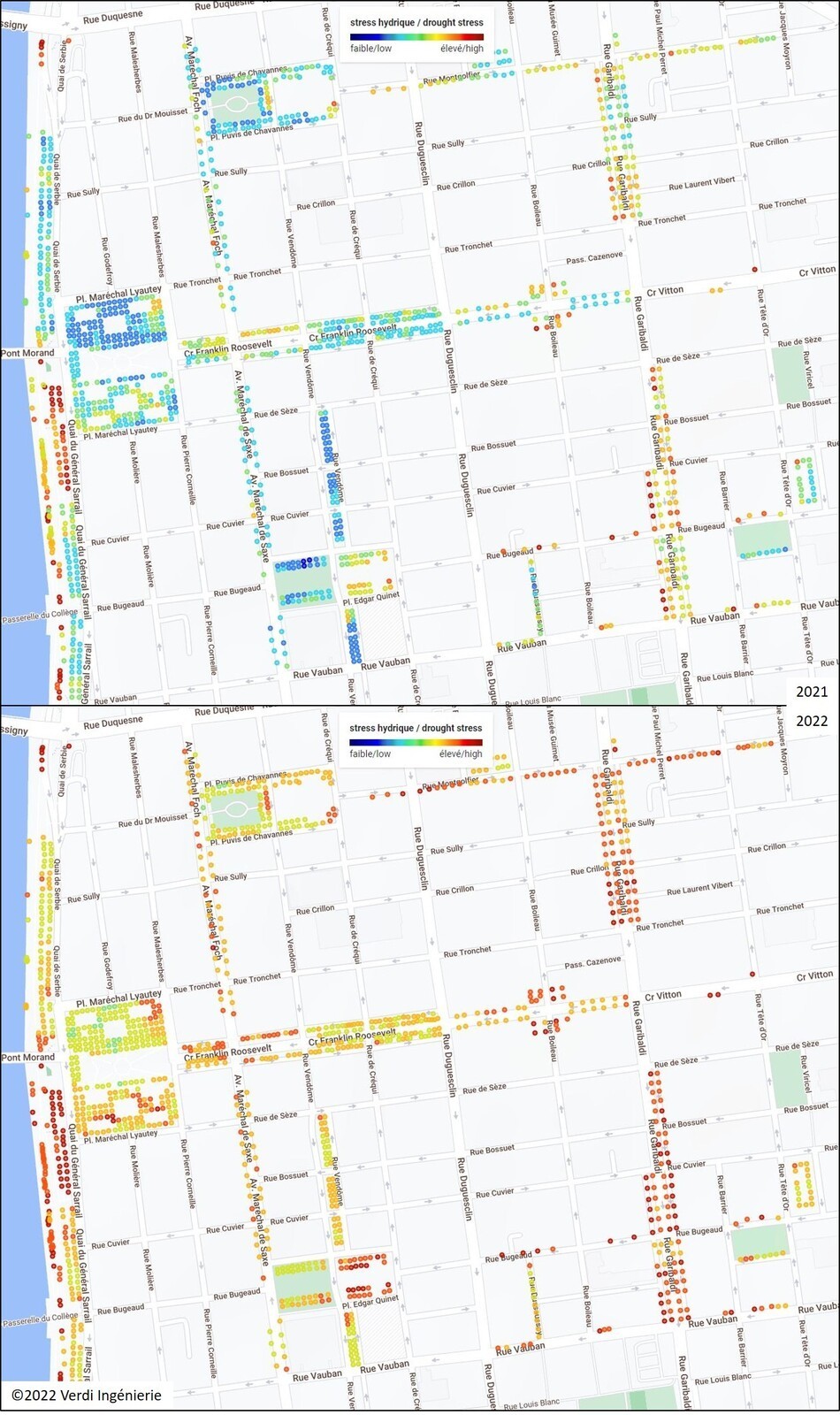
Although water stress is much greater in 2022 than in 2021 for all sites, it is interesting to note that areas with high concentrations show better resilience than street trees, including in 2021. Street trees are the first to suffer from stress.
Resilience is even better for wooded parks, even if these show a certain water deficit in 2022. In order to go further on this aspect, we have selected two emblematic urban parks: Hyde Park in London (140 ha, designed in the 1820s) and the Parc de la Tête d'Or in Lyon (117 ha, designed in the 1850s), both of which have a body of water.
The first step was to detect the canopy over the periods of July 2021 and 2022, taking into account different levels of canopy quality and density. These processing operations are carried out using satellite data.
The following images show the determined canopies for the two parks, with a colour palette from very light green to dark green. At this stage, the two parks share the same observation with us:
- The canopy surface is a little lower in 2022 than in 2021. Plant growth has certainly been disrupted by the very early heat waves this year
- It is above all the plant quality that has changed significantly: plant density and level
of hydration, the result of climatic conditions
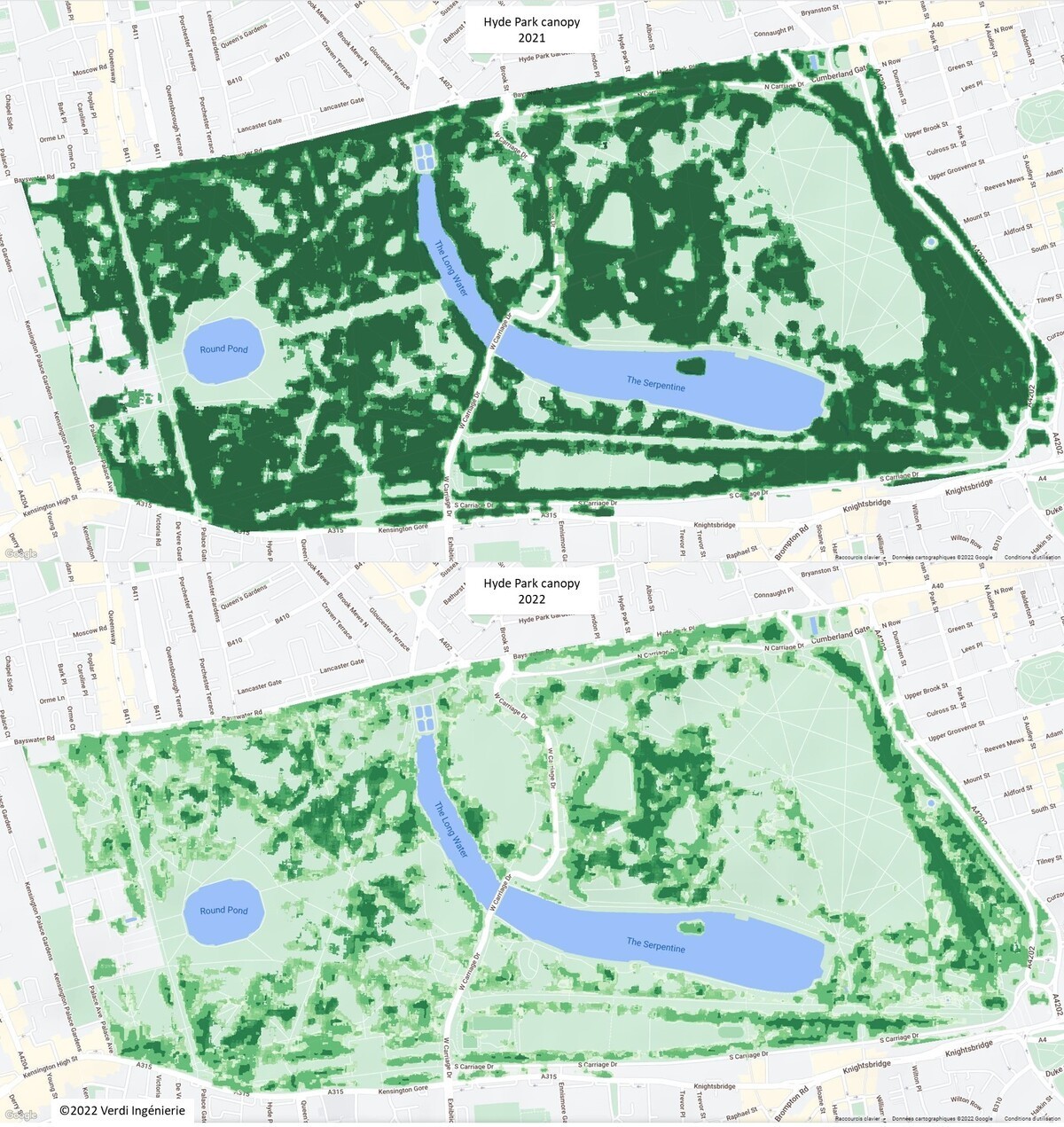
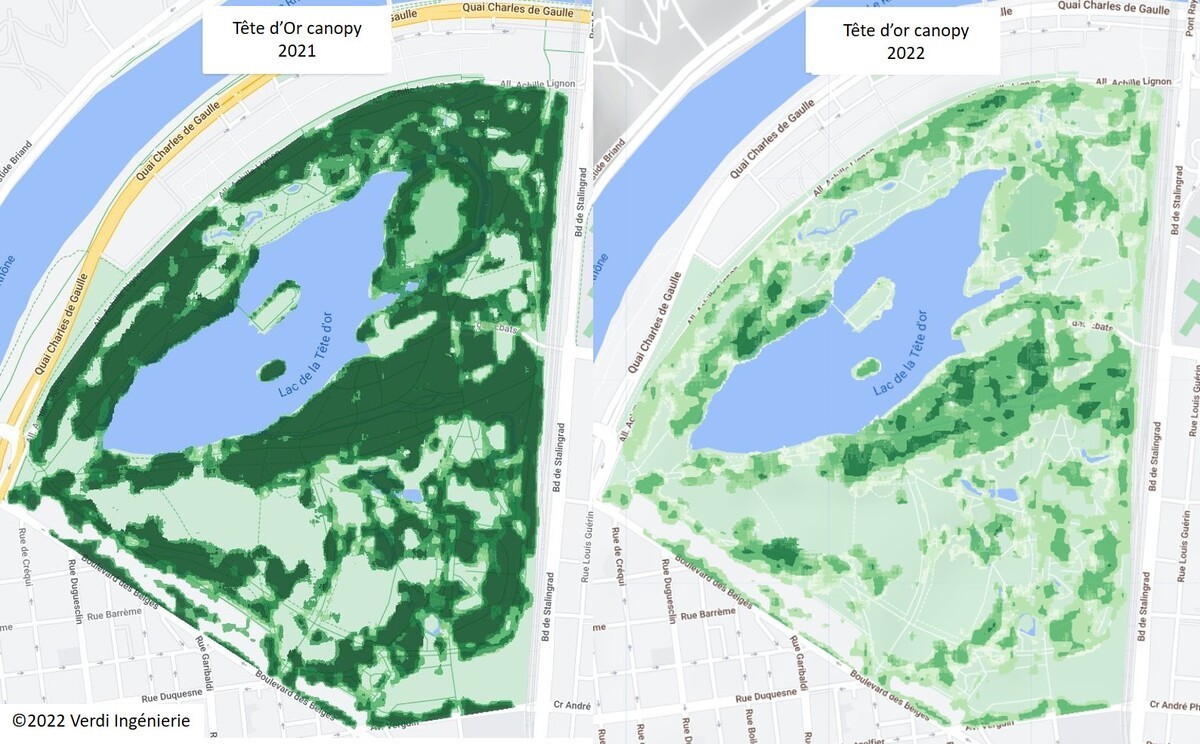
The second step consisted of mapping the water stress on these canopies. The images provide an even more telling observation.
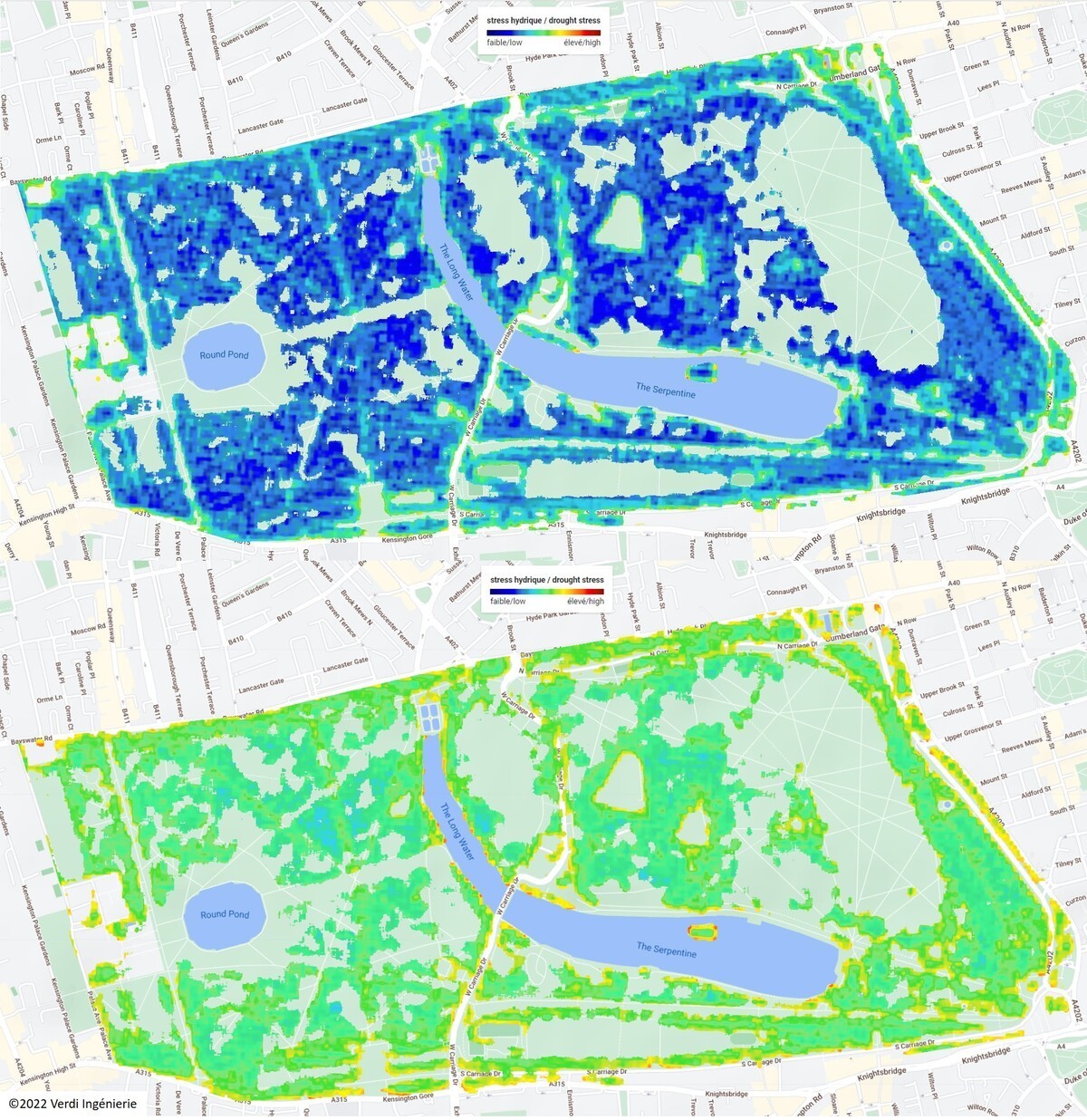
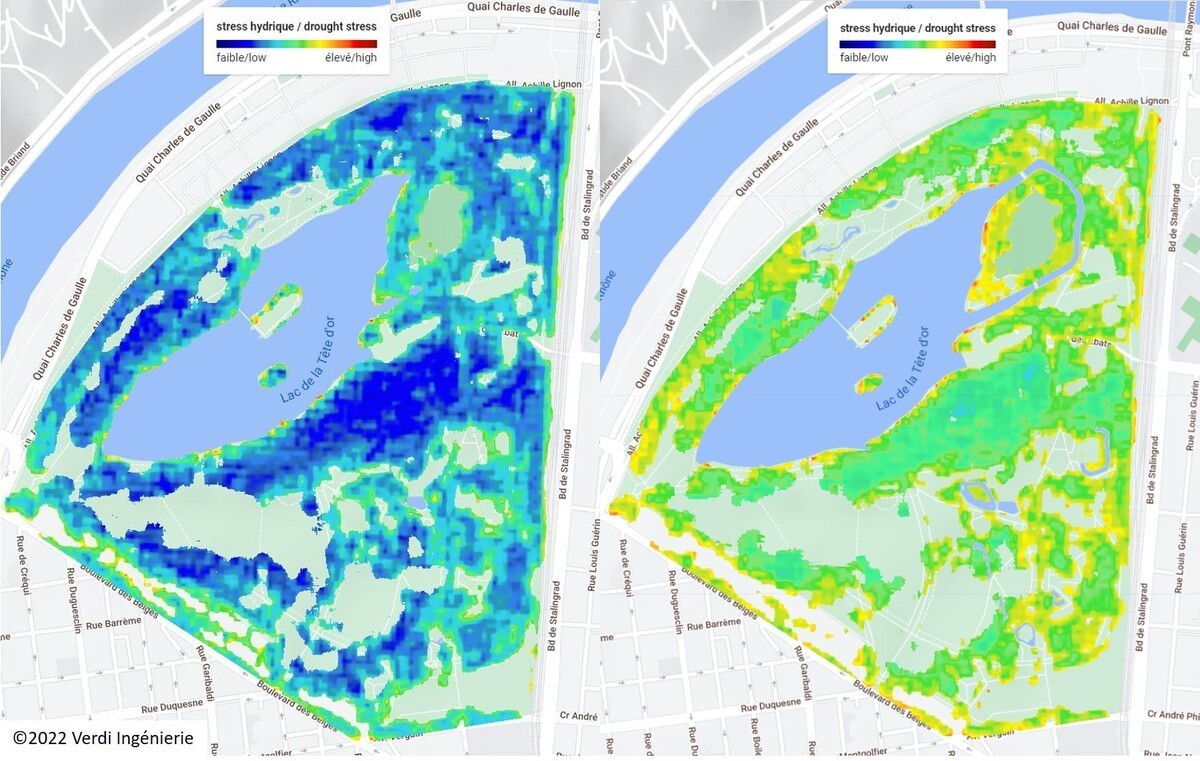
These results confirm the diagnosis that can be seen in the field, by seeing a number of trees with shriveled leaves. They also lead us to think about important questions for development projects and revegetation strategies:
- Street trees in pits, even large ones, are under increased stress. Access to water resources is more limited for them, they also suffer from the solar fluxes reflected by the mineral soil that surrounds them and do not benefit from the support of their congeners.
- Tree concentrations display a much better resistance to stress. Planted in the ground, the trees also benefit from the protection of their neighbors. Peripheral canopies are often more impacted.
The sensitivity analysis according to the species provides very important additional information, which can be presented later.
In addition to the diagnostic aspect that we have just illustrated, this approach also allows dynamic monitoring of the behavior of trees over the weeks, opening up possibilities for preventive management of wooded areas.



